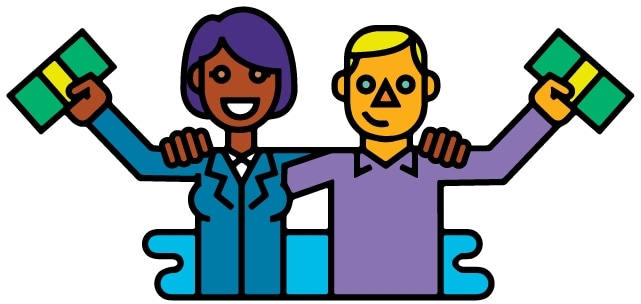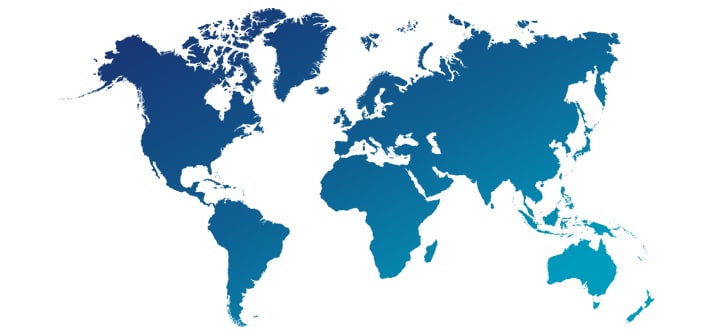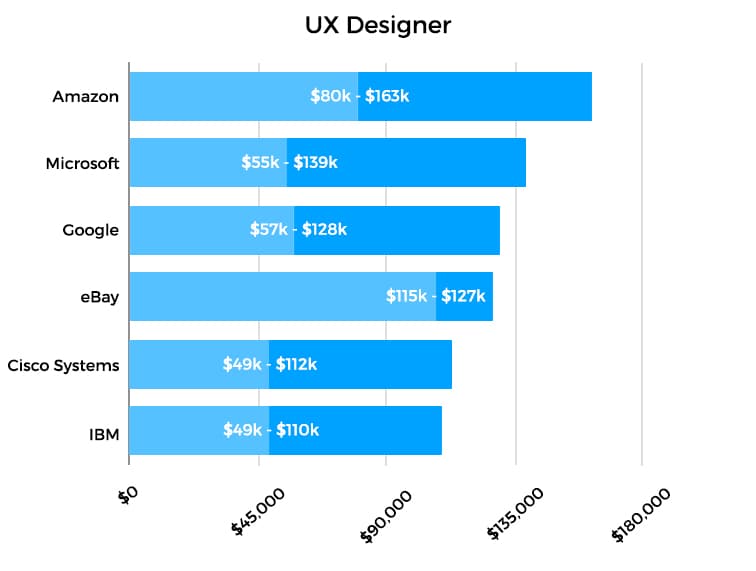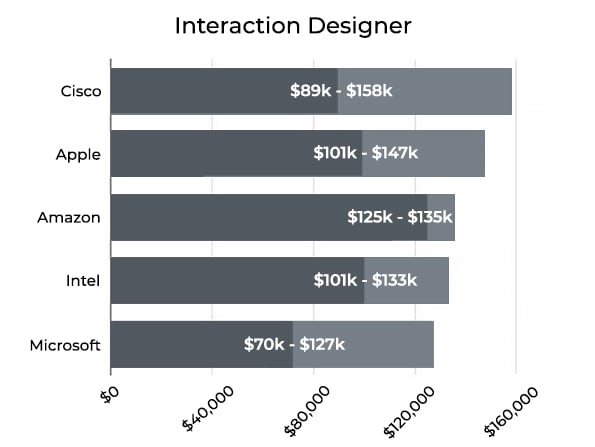What UX Designer Salary Will I Earn in 2024?

If you're just getting into the field of UX design or thinking about doing so in 2023, you probably have a lot of questions about your potential UX design salary and what the market is willing to pay for new talent. If you already have some experience under your belt, you might be looking for better opportunities but aren't sure of what an experienced user experience designer salary should look like in terms of what you make overall and what you take home every year. This article will provide you with the latest UX design salary information from around the world. With today's digital transformation in full play, you could be working from home but for any company located anywhere in the world. That's why it's important to know what's out there in terms of opportunity.
What's the Current Job Market Situation for a UX Designer?
According to a recent survey by LinkedIn, the role of UX designer is one of the Top 5 most in-demand positions in the world today. Another study shows that the demand for UX designers is on the rise, and will increase by 3% every year for the next seven to eight years, possibly longer. That figure was from before the pandemic struck, and the fact that most of the world's companies are undergoing digital transformations means the growth rate is likely to be much higher in 2023.
That said, a user experience design salary package is dependent on several factors:
The size of the company
The scope of average projects
The country where the company is located
The market that the company serves
The experience level of the UX designer
All these factors combine to produce different averages in different countries and markets. To make sense of it, let's look at it from a local perspective and see that average UX designer salary profiles look like in major global markets based on the country, experience level of the UX designer, and the type and size of the company they work for.
UX Designer Salary Averages by Country

There are essentially five countries where UX design jobs are concentrated. This distribution shown below is for guidance only:
United States - about 20%
Canada - about 4%
United Kingdom - about 4%
Germany - about 3.5%
France - about 2.5%
Of course, that doesn't exclude other markets from the picture because today's remote work environment means that a designer in Vietnam or Ukraine could be working for the top technology companies in the United States or Germany. There are talented UX designers from every part of the world, and getting the right opportunity is merely a question of getting your work noticed in the right circles and job markets.
With regard to average UX designer salaries in these countries, here's the most recent data:
United States - $97,000 a year
Canada - $60,000 a year
United Kingdom - $62,000 a year
Germany - $60,000 a year
France - $53,000 a year
As you can see, there's quite a bit of variance even between the countries with the most UX designers. Apart from these countries, other major markets offer these average UX design salary levels:
China - $47,000 a year
India - $21,000 a year
Singapore - $51,000 a year
Australia - $76,000 a year
The highest average salary for a UX designer was recorded in Switzerland - $100,000 a year.
UX Designer Salary Averages by Experience Level

But the data above is an average of UX design salary profiles across all levels of experience. If you're a new UX designer just entering the field or an old hand with a decade of experience, what can you expect to earn? Here are some interesting statistics around salaries in the U.S. market for various levels of experience, according to SkillCrush:
Entry-level – $75,000 – $80,000 a year (1 year or less)
Intermediate level – $90,000 – $105,000 a year (8 years)
Senior-level – $110,000 – $113, 000 a year (More than 15 years)
Breaking it down further into specific experience periods:
0-3 years – $77,000 a year
4-7 years – $99,000 a year
8-12 years – $112,000 a year
13+ years – $123,000 a year
Again, these are only averages, and just for the United States alone. There are also broad variances depending on the company you work for and its size, which we look at next.
UX Designer Salary Averages by Company Type and Size

Before we look at salaries, let's look at an interesting phenomenon with regard to the types of companies that are aggressively hiring the most number of UX designers around the world. Here is the percentage of job ads for UX designers by company type:
Up to 50 employees - 23%
More than 10,000 employees - 26%
Companies of all other sizes in between the smallest and the largest only have 4% to 16% of all advertised jobs. That means the smallest and the biggest are hiring in the most aggressive manner. That makes a lot of sense because big businesses are growing bigger due to the global digital transformation, and small businesses are growing at a rapid pace because SMEs and individual professionals are also hitting the digital angle hard.
As for UX designer salary classifications by company size and type, here's some data from some of the largest companies in the world:


Some other notables in this category are Alibaba, which pays user experience design salary ranging from $64,000 to $260,000 a year, Facebook at $130,000 to $140,000 a year, Adobe, at $66,000 to $166,000 a year, and Tesla, at $83,000 to $110,000 a year.
If you notice, the companies that lead the field in UX design salary structures are also the companies with the greatest visibility in the world. That's because strong UX design leads to powerful branding for your company. The Brand Finance Global 500 2023 ranked Apple as the most valuable brand in the world. You can clearly see the reason when you look at the company's rabid focus on the user experience above all other considerations. Everything from product design to device performance screams UX DESIGN!
That's also why the top companies pay the top salaries, which isn't surprising because they have to get the best if they want to stay ahead of the competition. If you get the opportunity to work with one of these companies, that means you're considered to be the cream of the crop. If you're the ambitious type, that's what you should be aiming for.
Some Parting Thoughts
The biggest companies obviously pay the most, but that doesn't mean you have to aim to work in one of these companies. The pressure to deliver is exceptionally high and not many UX designers survive that long unless they have the psyche to cope up with the stress. In addition, a UX designer in one of these companies rarely gets to work on a complete product unless they're at the very top of the design team hierarchy. The bulk of UX designers in such companies work in teams on small parts of the project in question. That's why many UX designers actually prefer low-pressure jobs, where there's more job satisfaction even though the pay may not be as high.
Your decision to get a UX design job mustn't depend on the money factor alone. The satisfaction of designing a user experience goes beyond mere dollars and cents. It's about how happy you are at your job, how much freedom you have, whether you're able to enjoy the simpler things in life like spending time with family and other such considerations.
In terms of the tools you need, every UX designer should have one favorite design and prototyping platform. The top ones are Sketch and Figma, but there are also others like Wondershare Mockitt, a cloud-hosted UI and UX design and prototyping tool that's user-friendly, affordable, full-featured, and highly collaborative by design. It contains vast asset libraries with hundreds upon hundreds of components and widgets, offers complimentary design systems and UI kits, and the best part is that UX designers don't need to know any coding to start working on the platform. The robust asset libraries and the ease with which the developer handoff can be executed make it one of the fastest-growing prototyping platforms in today's evolving market. You can try it for free or sign up for one of the affordable annual plans for individuals, teams, and enterprise-level design divisions.

